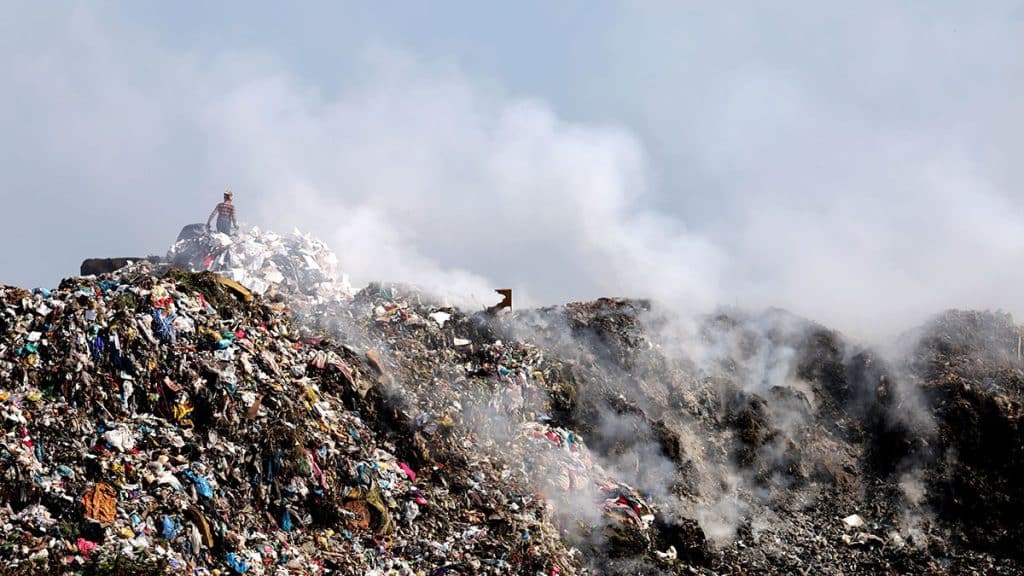In the face of global warming, greenhouse gas emissions have become a critical issue in environmental protection worldwide. Landfills, which emit substantial methane, are recognized as significant sources of greenhouse gases. Methane is an extremely potent greenhouse gas, with each molecule contributing over 25 times more to atmospheric warming than carbon dioxide. Thus, methane emissions from landfills have a profound impact on climate change. This article delves into the role of landfill methane emissions in contributing to climate change, quantifies landfills’ contributions to greenhouse gas emissions, and examines how advanced methane detection technologies support effective reduction measures, helping landfills take on greater responsibility in combating climate change.
The Impact of Landfill Methane Emissions on Climate Change
Landfills, as the primary method for managing urban solid waste, produce significant amounts of methane as organic waste decomposes in anaerobic conditions. Uncontrolled methane emissions from landfills enter the atmosphere, exacerbating the greenhouse effect and accelerating global warming. Statistics show that methane emissions from global landfills account for about 20% of all human-generated methane emissions, making landfills the fourth largest methane source after agriculture, fossil fuel production, and transportation. Without intervention, these emissions will continue to have a negative impact on the climate, intensifying global warming.
As part of the climate change response framework, landfill operators are responsible not only for managing waste but also for reducing greenhouse gas emissions. In light of tightening global greenhouse gas standards, landfill managers must adopt more scientific, effective ways to reduce methane emissions.
The Role of Methane Detection Technology in Emissions Reduction
Accurate detection and real-time monitoring are essential for effective methane management. Traditional monitoring methods often fall short of the increasing demands for emissions control in landfills due to equipment limitations and monitoring inefficiencies. Advanced methane detection technology, such as the Purway Methane Detector, offers an innovative solution for efficient landfill emissions management.
The Purway Methane Detector leverages state-of-the-art TDLAS (Tunable Diode Laser Absorption Spectroscopy) technology, delivering high-precision methane detection. Not only does it capture extremely low methane concentrations, but it also features a rapid 10-millisecond response time, providing real-time data capture. Its 300-meter detection range allows the Purway detector to effectively monitor methane concentration changes over large areas in complex landfill environments, providing accurate and comprehensive data. With real-time monitoring capabilities, landfill managers can swiftly identify potential leak sources and take immediate action to keep emissions under control, thereby reducing the environmental and health risks associated with methane.
Effective Methane Emission Reduction Strategies
Methane detection is only the first step in landfill emissions reduction. Once elevated methane concentrations or potential leaks are detected, landfill managers need to implement additional measures to control and reduce emissions. Here are several commonly used landfill methane mitigation methods:
1. Gas Collection and Utilization: By implementing comprehensive gas collection systems, methane generated at landfills can be captured and repurposed for energy projects such as power generation and heating. This approach reduces methane emissions while converting it into a clean energy source, creating economic benefits for the landfill.
2. Methane-Oxidizing Cover Layers: Methane-oxidizing cover layers can be placed on the landfill surface to convert methane to carbon dioxide before it escapes into the atmosphere. Since the warming effect of carbon dioxide is much lower than that of methane, this method helps alleviate the environmental burden of landfill emissions.
3. Biological Filtration and Degradation: Microbial methane degradation is another effective method for controlling landfill emissions. Certain microbes can use methane as a carbon source, breaking it down through biofilters or bioreactors.
4. Data-Driven Real-Time Management: Equipped with high-precision devices such as the Purway Methane Detector, landfills can track real-time methane concentration trends, use historical data to anticipate methane peaks, and conduct preventative treatment accordingly. Real-time data not only enhances landfill management but also improves compliance with evolving environmental regulations, giving landfills a competitive edge in meeting future stringent greenhouse gas standards.
The Role of Landfills in Climate Responsibility
In the face of climate change, landfills must be more than just emission sources; they should also be active participants in greenhouse gas reduction. By promoting and applying advanced methane detection and control technologies, landfills can progressively decrease methane emissions and make positive contributions toward reducing greenhouse gases. Methane monitoring devices like the Purway Methane Detector empower landfill managers to monitor emissions with greater precision, bolstering efforts to achieve carbon neutrality.In the future, as methane detection technology continues to improve and environmental standards become stricter, landfills will assume greater responsibilities in greenhouse gas reduction and ecological protection.
